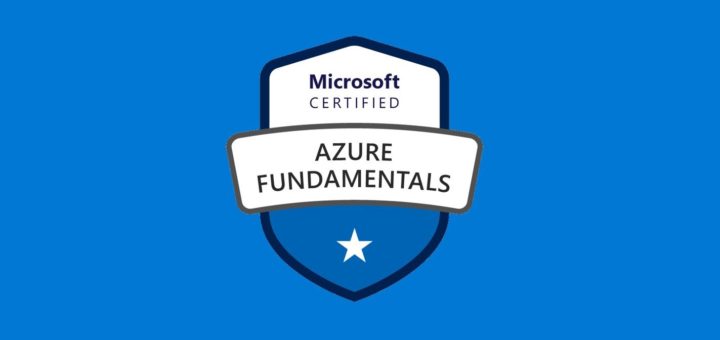Question #91
A development team is using AWS Elastic Beanstalk to deploy a two-tier application that consists of a load-balanced web tier and an Amazon RDS database tier in production. The team would like to separate the RDS instance from the Elastic Beanstalk.
How can this be accomplished?
- A. Use the Elastic Beanstalk CLI to disassociate the database.
- B. Use the AWS CLI to disassociate the database.
- C. Change the deployment policy to disassociate the database.
- D. Recreate a new Elastic Beanstalk environment without Amazon RDS. C
Correct Answer: Explanation
Question #92
According to best practice, how should access keys be managed in AWS? (Choose two.)
- A. Use the same access key in all applications for consistency.
- B. Delete all access keys for the account root user.
- C. Leave unused access keys in the account for tracking purposes.
- D. Embed and encrypt access keys in code for continuous deployment.
- E. Use Amazon IAM roles instead of access keys where possible.
Correct Answer: BE
Reference:
https://docs.aws.amazon.com/general/latest/gr/aws-access-keys-best-practices.html#iam-user-access-keys
Question #93
The development team is working on an API that will be served from Amazon API gateway. The API will be served from three environments: development, test, and production. The API Gateway is configured to use 237 GB of cache in all three stages.
Which is the MOST cost-efficient deployment strategy?
- A. Create a single API Gateway with all three stages.
- B. Create three API Gateways, one for each stage in a single AWS account.
- C. Create an API Gateway in three separate AWS accounts.
- D. Enable the cache for development and test environments only when needed.
Correct Answer: D
Question #94
An application running on an Amazon Linux EC2 instance needs to manage the AWS infrastructure.
How can the EC2 instance be configured to make AWS API calls securely?
- A. Sign the AWS CLI command using the signature version 4 process.
- B. Run the aws configure AWS CLI command and specify the access key id and secret access key.
- C. Specify a role for the EC2 instance with the necessary privileges.
- D. Pass the access key id and secret access key as parameters for each AWS CLI command.
Correct Answer: C
Question #95
A company is migrating from a monolithic architecture to a microservices-based architecture. The Developers need to refactor the application so that the many microservices can asynchronously communicate with each other without impacting performance.
Use of which managed AWS services will enable asynchronous message passing? (Choose two.)
- A. Amazon SQS
- B. Amazon Cognito
- C. Amazon Kinesis
- D. Amazon SNS
- E. Amazon ElastiCache
Correct Answer: AD
Question #96
An application runs on multiple EC2 instances behind an ELB.
Where is the session data best written so that it can be served reliably across multiple requests?
- A. Write data to Amazon ElastiCache
- B. Write data to Amazon Elastic Block Store.
- C. Write data to Amazon EC2 Instance Store.
- D. Write data to the root filesystem.
Correct Answer: A
Reference:
https://docs.aws.amazon.com/aws-technical-content/latest/microservices-on-aws/microservices-on-aws.pdf?icmpid=link_from_whitepapers_page
Question #97
A Developer is creating a Lambda function that will generate and export a file. The function requires 100 MB of temporary storage for temporary files while executing. These files will not be needed after the function is complete.
How can the Developer MOST efficiently handle the temporary files?
- A. Store the files in EBS and delete the files at the end of the Lambda function.
- B. Copy the files to EFS and delete the files at the end of the Lambda function.
- C. Store the files in the /tmp directory and delete the files at the end of the Lambda function.
- D. Copy the files to an S3 bucket with a lifecycle policy to delete the files.
Correct Answer: C
Reference:
https://forums.aws.amazon.com/thread.jspa?threadID=174119
Question #98
A Developer has developed a web application and wants to deploy it quickly on a Tomcat server on AWS. The Developer wants to avoid having to manage the underlying infrastructure.
What is the easiest way to deploy the application, based on these requirements?
- A. AWS CloudFormation
- B. AWS Elastic Beanstalk
- C. Amazon S3
- D. AWS CodePipeline
Correct Answer: B
Reference:
https://aws.amazon.com/answers/web-applications/aws-web-app-deployment-java/
Question #99
An application uses Lambda functions to extract metadata from files uploaded to an S3 bucket; the metadata is stored in Amazon DynamoDB. The application starts behaving unexpectedly, and the Developer wants to examine the logs of the Lambda function code for errors.
Based on this system configuration, where would the Developer find the logs?
- A. Amazon S3
- B. AWS CloudTrail
- C. Amazon CloudWatch
- D. Amazon DynamoDB
Correct Answer: C
Question #100
An organization is using Amazon CloudFront to ensure that its users experience low-latency access to its web application. The organization has identified a need to encrypt all traffic between users and CloudFront, and all traffic between CloudFront and the web application.
How can these requirements be met? (Choose two.)
- A. Use AWS KMS to encrypt traffic between CloudFront and the web application.
- B. Set the Origin Protocol Policy to “HTTPS Only”.
- C. Set the Origin’s HTTP Port to 443.
- D. Set the Viewer Protocol Policy to “HTTPS Only” or “Redirect HTTP to HTTPS”.
- E. Enable the CloudFront option Restrict Viewer Access.
Correct Answer: CD




Thank you !!
Helped me in achieving my aws developer certification.